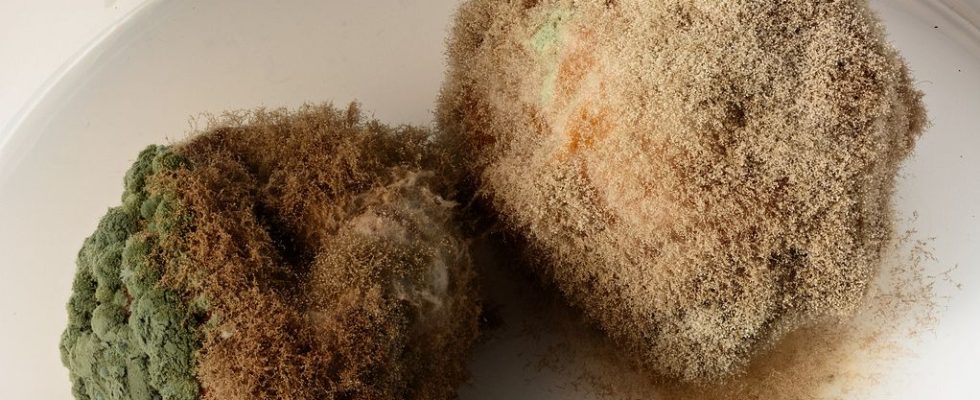They are not picky and enjoy all kinds of foods. Sneaky enemies, molds like to invite themselves into fridges, fruit baskets or jam jars. Something to disgust consumers who, in many cases, throw the moldy food directly into the trash. However, not all molds are bad and even give their flavor to certain cheeses, such as Roquefort. Unappetizing, these small black or greenish spots are not all toxic either. Can we eat them then? Cut only the moldy part and eat the rest of the food? Or throw it all away?
It is in an attempt to answer all these questions that a project, financed by the National Research Agency, has just been launched by teams from the University of Western Brittany, based in Brest. Called Mynion, it aims to “fill the gap in scientific knowledge about moulds”, according to Monika Coton, teacher-researcher at the University Laboratory of Biodiversity and Microbial Ecology, which is leading the project.
500 moldy foods to be collected from households
And to learn more about these fungi that degrade food and alter its taste and appearance, scientists need your help. Original, the project is intended to be collaborative. Everyone is thus invited to send moldy food to the team of researchers, so that they constitute a real collection of moulds. ” You just have to registeranswer a short questionnaire and send us in a kit that we provide a sample of moldy food found at home,” explains Kimberley Girardon, from the Economics and Management Laboratory of the West, who will be responsible for collection.
By the end of the year, scientists hope to collect 500 moldy foods from households. “We accept all moulds,” smiles Kimberley Girardon. Whether on fruit, dairy products, baked goods, jam or dry sausage. »
Fight against food waste
Once this feast has been harvested, the researchers will then study these molds in great detail. An ambitious project that will span four years. “We already want to determine which foods are the most prone to mold and find out how consumers react to moldy products,” emphasizes Monika Coton. The work will also focus on the health component. “We know that certain molds pose a risk because they produce mycotoxins,” says the researcher. We are now trying to find out whether these mycotoxins are likely to migrate into the food and to what extent they present a health risk. »
So many questions still unanswered which will, in the long term, enlighten the general public on the dangerousness of these moulds. “The idea of the project is also to deal with food waste by preventing consumers from systematically throwing away moldy food,” says Monika Coton. To do this, we will establish simple recommendations while of course taking into account the health risk. »

